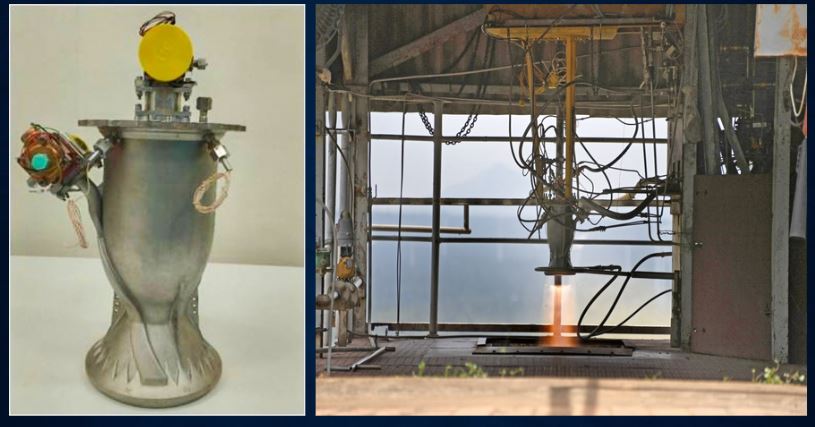ISRO Successfully Tests 3D-Printed Rocket Engine
The Indian Space Research Organisation (ISRO) has achieved a remarkable feat by successfully conducting a hot test of a 3D-printed liquid rocket engine on May 10, 2024. This test represents a crucial step forward in integrating Additive Manufacturing (AM) technologies into India’s space exploration program.
The 3D-printed Rocket Engine
The engine tested, known as the PS4 engine, is primarily used in the fourth stage of the Polar Satellite Launch Vehicle (PSLV) and the Reaction Control System (RCS) of the first stage (PS1). It is developed by ISRO’s Liquid Propulsion Systems Centre (LPSC) and uses a combination of Nitrogen Tetroxide and Mono Methyl Hydrazine as propellants in a pressure-fed system.
Advantages of Additive Manufacturing
Additive Manufacturing, or 3D printing, offers numerous benefits over traditional manufacturing methods. To optimize for AM, the engine was redesigned based on the Design for Additive Manufacturing (DfAM) principles. This redesign helped reduce the number of parts from 14 to just one and eliminated 19 weld joints. The production employed a Laser Powder Bed Fusion technique, which decreased material usage drastically from 565 kg to just 13.7 kg of metal powder, and also cut down production time by 60%.
Partnership and Testing Phases
The engine was manufactured in collaboration with WIPRO 3D, an industry partner, and tested at ISRO’s Propulsion Complex in Mahendragiri. Prior to the successful 665-second test, the engine underwent a series of developmental tests and simulations that included earlier hot tests of the injector head, detailed flow and thermal modeling, and structural simulations, accumulating a total of 74 seconds of testing to ascertain performance parameters.
Impact and Forward Look
With the successful completion of the hot test lasting a full qualification duration, ISRO has demonstrated the feasibility and efficiency of incorporating AM technology into the production of rocket engines for its PSLV program.
The performance parameters observed during the test were in line with expectations, paving the way for regular integration of this technology. This development not only enhances the capabilities of ISRO’s launching vehicles but also positions India as a leader in the adoption of advanced manufacturing technologies in the aerospace sector.
About ISRO
ISRO (Indian Space Research Organization) is India’s national space agency established in 1969. Headquartered in Bengaluru, ISRO operates under the Department of Space and is tasked with advancing space technology and its applications for national development.
Known for cost-effective and reliable space missions, ISRO has achieved significant milestones including the Chandrayaan missions to the Moon, the Mars Orbiter Mission (Mangalyaan), and the development of the Polar Satellite Launch Vehicle (PSLV) and Geosynchronous Satellite Launch Vehicle (GSLV). Its achievements contribute to global admiration, enhancing India’s capability in earth observation, communication, and educational sectors.
About Additive Manufacturing (AM)
Additive Manufacturing (AM) refers to the construction of objects by adding material layer by layer, often using plastic or metal. Unlike traditional subtractive methods (e.g. machining), AM, also known as 3D printing, allows for complex geometries and bespoke designs with less waste.
Common techniques include Fused Deposition Modeling (FDM), where a filament is extruded through a nozzle, and Selective Laser Sintering (SLS), which uses a laser to fuse powdered material. Applications range from prototyping and small batch production to the creation of specialized medical implants and aerospace components.
About Polar Satellite Launch Vehicle (PSLV)
Polar Satellite Launch Vehicle (PSLV) is an indigenously developed expendable launch system by the Indian Space Research Organisation (ISRO). Featuring a four-stage system, PSLV became operational in 1994 and is renowned for its reliability and versatility, having launched numerous satellites for various countries into polar orbits. Predominantly used for deploying satellites into the Sun-synchronous orbits, it has played a crucial role in India’s space missions including Chandrayaan-1 and Mars Orbiter Mission.
Month: Current Affairs - May, 2024
Category: Science & Technology Current Affairs






